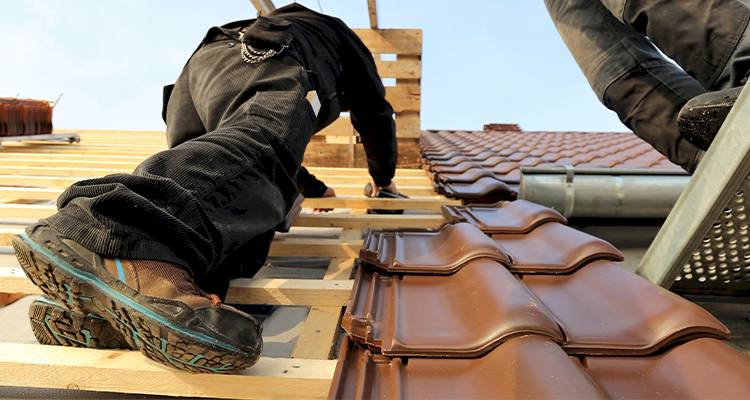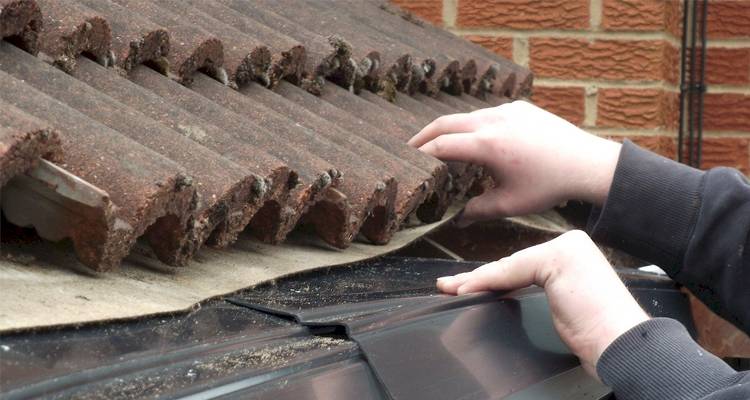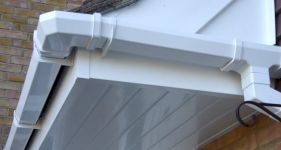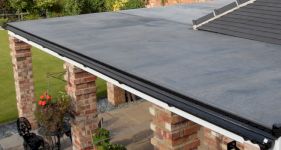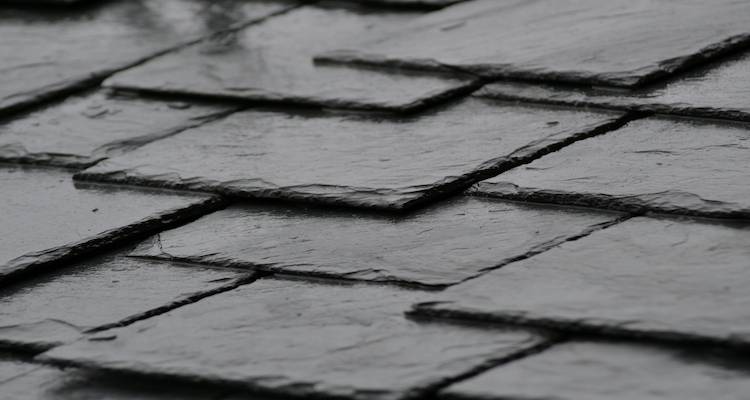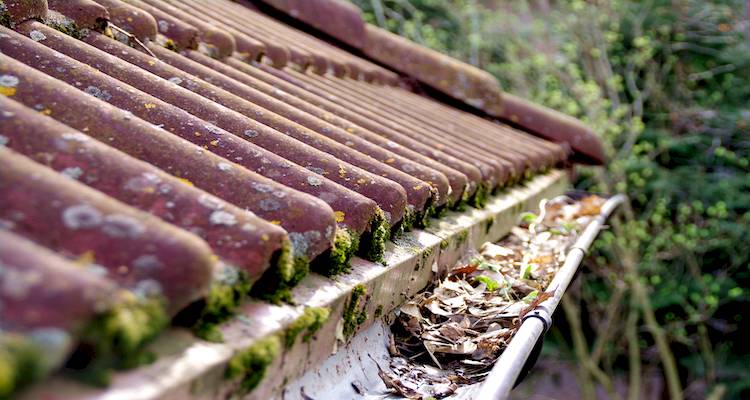Chimney Repair Guide
Are you looking for information about chimney repairs? Chimney repairs can be tricky if you don't know what you're doing. This article will help to highlight everything you need to know about chimney repairs.
We will go over the different types of common chimney repairs, the pros and cons of repairing your chimney, chimney repair costs, and the questions that you should ask when finding the right contractor for the job.
We will also go over any building regulations and planning permissions required for work on your chimney and provide you with information on the best ways to clean and maintain your chimney.
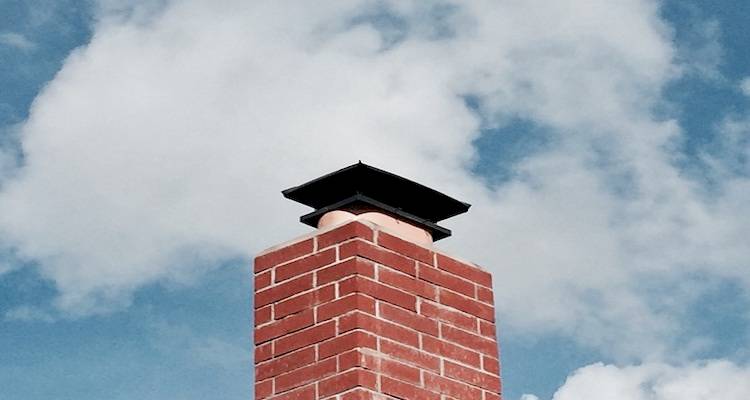
Table of Contents
- What is a Chimney Repair?
- Types of Chimney Repairs
- What Are the Benefits of a Chimney Repair?
- How Much Do Chimney Repairs Cost?
- How to Repair a Chimney
- How Long Does It Take to Repair a Chimney?
- Building Regulations & Planning Permission for Chimney Repairs
- How to Clean and Maintain a Chimney
- Questions to Ask When Hiring a Chimney Specialist
- FAQs
What is a Chimney Repair?
Chimneys are often neglected, especially if they are not used much and particularly in the summertime. However, it's very important to keep on top of maintaining your chimney. Regular inspections are important, and you should keep on top of keeping your chimney clean.
If you fail to keep on top of maintaining your chimney, you may encounter some problems that need to be repaired. A chimney repair will involve locating the issue and fixing whatever the problem may be. Several things can go wrong with a chimney. In the section below, we will go over the different types of chimney repairs.
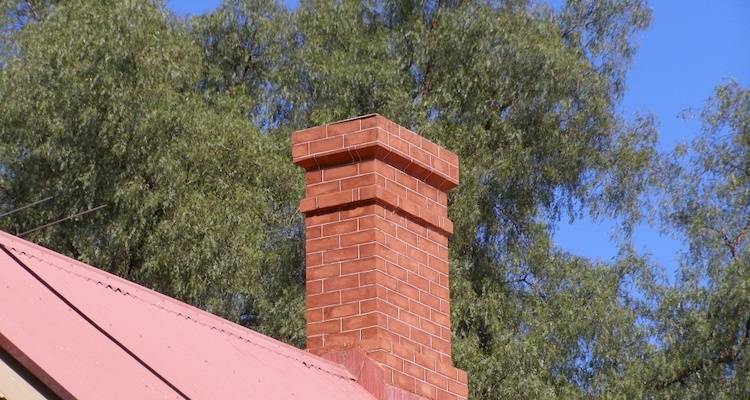
Types of Chimney Repairs
There are several different types of chimney repairs. Below is a list of the most common chimney repairs that you may need to address.
Chimney Stack Repair
The most common problem with the chimney stack is usually down the natural eroding of the pointing. This is when the joints between the courses of bricks or stone are no longer flush with the brickwork, causing it to break away. In these cases, you will need to hire a professional who will complete a chimney repointing.
If the internal chimney structure is causing issues inside the property, you may also need to consider chimney breast removal.
Chimney Flashing Repair
Over time, the flashing in your chimney can become weak or damaged. This can cause water or moisture leaks in your chimney, which can damage the chimney stack and other areas of the chimney.
If there is any damage to your chimney flashing, the flashing will need to be replaced or repaired as soon as possible to prevent water from leaking into the chimney stack.
Chimney Leak Repair
The method of repair for a chimney leak will depend on the cause of the leak. In some cases, simply repairing or replacing the flashing will help to prevent the leak. Other times, you may need to repair or replace damaged bricks or mortar.

If you believe your chimney has a leak, it's a good idea to get in touch with a professional as soon as possible who will be able to identify the problem and suggest the appropriate course of action to fix the leak.
Chimney Mortar Joint Repairs
If the bricks or mortar in the chimney are damaged, the most common repair is chimney repointing. However, it may be the case that some bricks or mortar will simply need to be replaced.
Therefore, it's a good idea to get a professional to look at your chimney to determine the best repair method for your damaged chimney mortar joints.
Cracked Chimney Crown Repair
If you notice any cracks in your chimney crown, you should fix these as soon as possible. This isn't too difficult of a job and could be done as a DIY project. However, you will need to make sure you take the appropriate safety precautions.
The best method of repair is to use sealant to fill in any cracks and secure the crown. Large cracks should be filled with patching cement or high-temperature silicone caulk.
What Are the Benefits of a Chimney Repair?
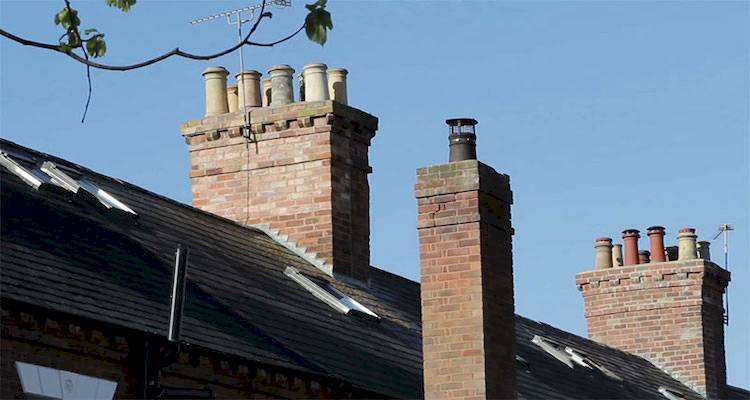
You may be wondering if it's worth repairing your chimney or not. To help you with your decision, take a look at the list below of the benefits of a chimney repair:
- Make Your Home Safer — Damage to your chimney can be dangerous to your home. A leaking chimney, for example, could cause moisture or gases to leak into your home. This can be very dangerous for your health and could cause additional issues.
- Improve the Look of Your Home — An old, damaged chimney on your property can be a real eyesore. A chimney repair can greatly improve the look of your home.
- Prevent Damp in the Home — A damaged chimney can cause water to leak into your home. This can cause a lot of damp, moisture, and humidity in your home.
- Improves Energy Efficiency — A well-maintained chimney and flue help your fire or stove burn more efficiently, so you get more heat from the same amount of fuel and waste less energy.
- Avoid Bigger Repairs in the Future — Repairing damage to your chimney early helps prevent small issues from turning into larger, more expensive structural problems.
- Lower Fire Risk — Keeping the chimney, flue, and liner in good condition reduces the risk of chimney fires caused by blockages or built-up debris.
The cost of repairing a chimney may put a lot of people off getting the work done right away, but it is very important that you get any issues with your chimney fixed as soon as possible. A damaged chimney could be very dangerous, and the problem could worsen if you choose to ignore it.
How Much Do Chimney Repairs Cost?
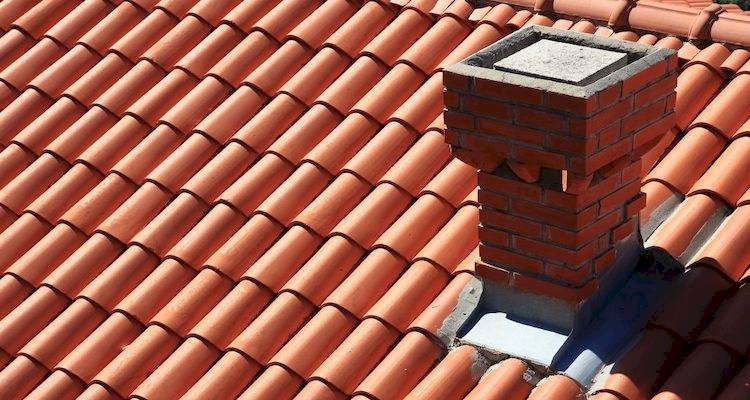
It can be difficult to determine how much your chimney repair is going to cost. This is because each of the chimney repairs will vary in cost depending on the type of repair needed, the level of damage, the ease of access to your roof, and your location in the UK.
For example, those based in London can expect to pay more for chimney repairs than those based in the North or other parts of the UK.
The cost of replacing your chimney flashing is generally higher than for minor flashing repairs. If you are repairing the flashing by replacing a small section or sealing up cracks, the overall cost is usually lower than a full replacement.
The average cost for replacing a chimney flue or installing chimney liner will depend on the size of the chimney and the grade of product used to complete the job.
If your chimney needs to be repointed, the price will vary depending on the size of the chimney and the ease of access to it.
In some cases, work on your chimney may require scaffolding. If that's the case, you can expect the overall cost to increase to cover the scaffolding.
You can get multiple quotes from local chimney specialists using MyJobQuote, to get an accurate price for your chimney repair. They are fast, free, with no-obligation to go ahead.
How to Repair a Chimney
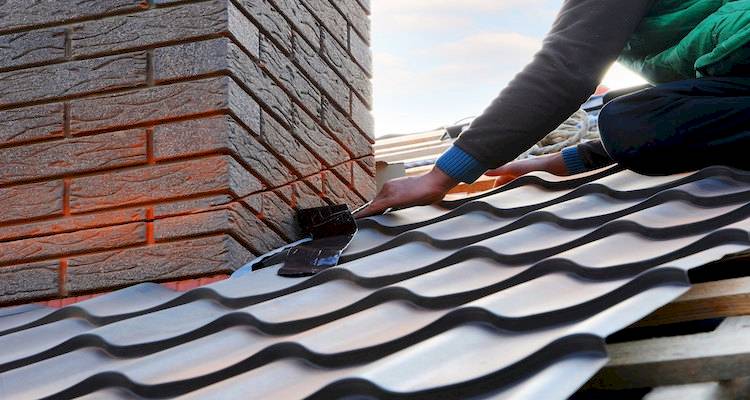
There are several different types of chimney repair, and the method of repairing a chimney can vary depending on the issue. Below is an overview of some of the most common chimney repairs and how to go about fixing them:
Repoint Chimney
Mortar holds the bricks in the chimney stack together. Over time, mortar can become loose and crumbly, which can cause bricks in the stack to come loose. Repointing involves scraping out the damaged or crumbly mortar and replacing it with new mortar.
- Scrape Loose/Damaged Mortar — Use a joint raker to scrape out all of the loose or damaged mortar. Leave the good mortar in place. Spray down the brick with a garden hose and allow it to sit for 30 minutes. Make sure the roof is dry before you carry on with the job.
- Apply New Mortar — Mix up a batch of new mortar. This should be the same sort of consistency as peanut butter. Use a pointing trowel to press the mortar into all of the open joints so that it matches up with the existing mortar. Smooth the joints down with a tuck-pointing tool.
Caulk Around Flue and Crown
The joint between the chimney and the crown can become a problem as it can allow water to leak through and enter your home.
- Clean Crown Joint — You will need to use a wire brush to clean out any debris, loose mortar, and moss from the joint.
- Seal Joint Completely — Use a caulk gun and a tube of high-temperature sealant to completely fill the gap with a full bead of caulk.
Patch Cracks in Crown
The chimney crown protects the chimney's masonry section and prevents water from pooling on the top. However, cracks in the chimney crown can be a big problem as water, snow, and other elements can gather there.
- Patch Large Cracks — If the cracks on the chimney crown are large, these can be repaired with a pre-mixed cement patch or mortar. You will need to inject this mixture into the crack using a squeeze bottle or force the mixture into the cracks with a putty knife.
Patch Hairline Cracks
Hairline cracks can be sealed using a water repellent. This is a liquid substance that can penetrate through hairline cracks. The solution will seal the cracks and the surrounding areas, making the whole area waterproof.
- Scrape Away Loose Particles — Use a putty knife to scrape away any loose particles but try to avoid making the cracks any larger.
- Apply Water Repellent —Next, apply the water repellent to the area undiluted using a brush. Two coats should be enough to completely seal the area.
Repair Cracked Bricks
If individual chimney bricks have small cracks in them, these can usually be repaired easily with a high-heat mortar and caulking gun.
- Clean the Crack — Clean the crack with the edge of a putty knife and remove any loose bits. Sweep the crack completely clean using a wire brush.
- Apply Mortar and Smooth — Squeeze some high-heat mortar into the crack as far as it will possibly go. Wipe the mortar with a gloved finger to smooth it out. Use a rag to clean the area around the crack and make it look neat.
- Treat Hairline Cracks — If the bricks have very thin, hairline cracks, these can be repaired usually by brushing them with water repellent.
Replace Cracked Bricks
If the bricks are severely damaged, the best course of action would be to remove and replace them. If you're careful, you can remove just one affected brick without altering the adjoining bricks.
- Remove Old Mortar — Use a masonry chisel or a flat-head screwdriver to slowly chip away the mortar around the affected brick.
- Pull Out Brick — Once the brick is loosened, you should eventually be able to pull it out by hand. Use the chisel to chip away at the remaining mortar on the adjacent bricks so that they are smooth.
How Long Does It Take to Repair a Chimney?
If you are planning on having your chimney repaired, you may be curious as to how long the repairs will take. Chimney repairs can vary in timeframe depending on the level of the damage, the ease of access, and the difficulty of the repair.
Many chimney repairs can be completed within a day. Most repairs will take just a few hours to complete; however, others can take an entire day.
If you are curious about how long it will take to fix your particular chimney problem, it's a good idea to speak to a chimney specialist and ask them to come out and take a look at your chimney. They will usually inspect your chimney for damage to determine the issue.
They will then be able to provide you with an estimated timeframe on how long it will take to fix that particular problem, along with an estimated cost for the job.
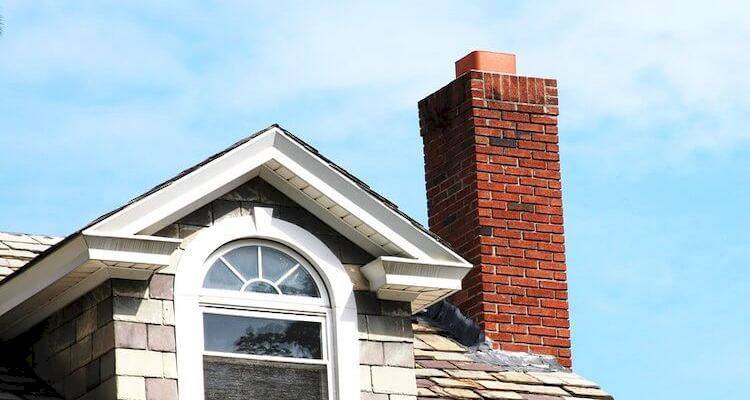
Building Regulations & Planning Permission for Chimney Repairs
Fitting, replacing or altering the external flue, chimney, or soil and vent pipe to a house is usually considered to be permitted development. If you live in a flat or maisonette, different rules may apply so check with your local council.
You will not normally require planning permission for this type of work as long as the following conditions are met:
- If the building is listed or you live in a conservation area, you should check with your local council to ensure you don't need planning permission.
- Flues do not extend more than one metre above the highest part of the roof.
If you are installing a new flue, building regulations will apply. You should consider factors such as safety and ventilation. The installation will need to be carried out by a suitably qualified installer.
When it comes to simple chimney repairs, you won't usually need to worry about planning permission. If the work alters your chimney's shape or location, you may need to follow some rules to adhere to building regulations.
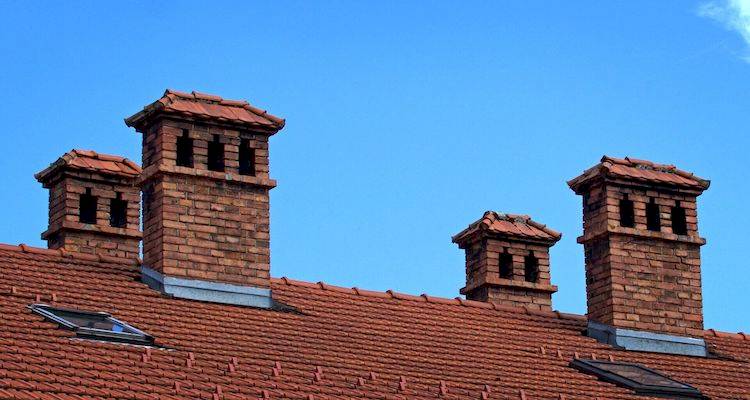
If you are unsure whether or not you may need building regulations approval, you should speak to your local council for some advice. The contractor that you hire may also be able to advise on whether building regulations approval is necessary.
However, it is ultimately the homeowner's responsibility to ensure all building regulations are adhered to.
How to Clean and Maintain a Chimney
Many people neglect their chimney or forget about it and just leave it. However, it's very important to keep on top of maintaining your chimney for the safety of you and your family. Below is a list of how to maintain your chimney:
- Have your chimney swept on a regular basis by an experienced chimney sweep. Sweeping a chimney once or twice a year is usually a good number of times to keep your chimney well-maintained.
- Check your carbon monoxide and smoke alarms regularly.
- Inspect your chimney regularly for signs of damage or corrosion.
- If burning wood, always use dry well-seasoned wood. Otherwise, tar deposits could gather within the flue.
- Check for any debris that falls down the chimney, such as pieces of mortar and bricks. This could indicate that there is some damage somewhere in the stack or crown.
- Regularly test your chimney for leaks using a smoke pellet.
- Ensure you get an annual gas check by a Gas Safe registered engineer to ensure the fire remains safe.
- Inspect the chimney stack and look out for signs of dampness that could damage the stack.
- Regularly clean the fireplace. Remove all ash and debris from the grates on a regular basis.
- Fill in any cracks or gaps that you notice appearing around the fireback and the surround.
Questions to Ask When Hiring a Chimney Specialist
There are several things you may need to consider when finding the right contractor to fix your chimney for you. Below is a list of common questions that you should ask when looking for the right contractor for the job:
- Does the contractor have any qualifications that relate directly to fixing chimneys?
- What equipment will the contractor be using to complete the job? Will they be using the correct type of equipment? Do you need to provide any equipment?
- Does the contractor possess any form of insurance for the work? You should look for contractors who have insurance that covers property damage, personal injuries, and a work guarantee.
- How much experience does the contractor have in fixing chimneys? Can they provide any testimonials or evidence of previous work? Can they provide photos of previous work?
- Does the contractor offer any guarantees with their work? How long does the guarantee last? What issues are covered under the guarantee? Will the contractor fix any issues that arise?
- Will the contractor adhere to all necessary building regulations rules when completing the work?
FAQs
How Long Does a Brick Chimney Last?
What Is the Cause of a Crumbling Chimney?
What Is a Chimney Rain Cap?
How Often Should I Have My Chimney Swept?
Why Is My Chimney Leaking?
- Damaged flashing
- Damaged bricks
- Damaged or crumbling mortar
- Cracks in the chimney crown
- Rain pouring through the top of the chimney
- A damaged rain cap
- Faulty roof tiles
- A lack of roof tiles
- Problems with the gutter

